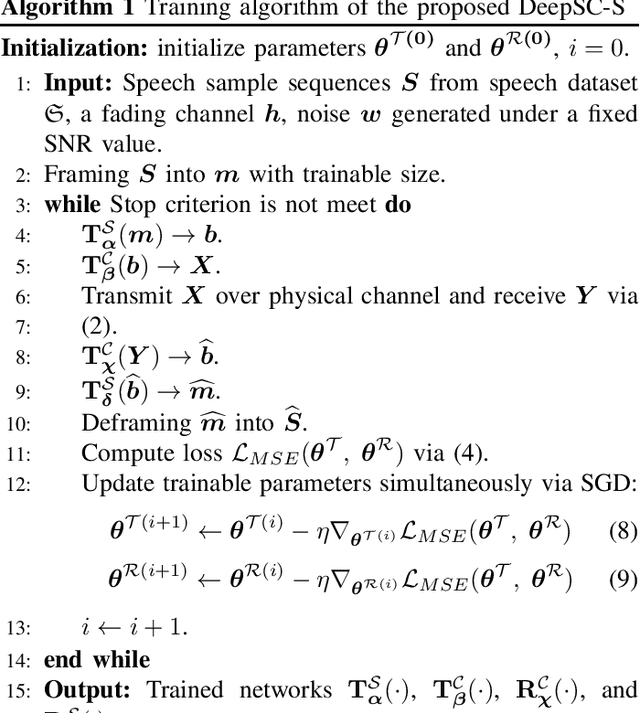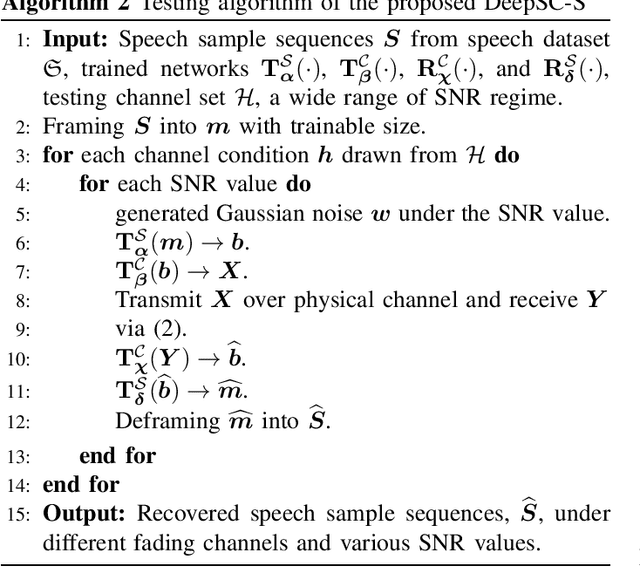Semantic Communication Systems for Speech Transmission
Paper and Code
Feb 24, 2021



Semantic communications could improve the transmission efficiency significantly by exploring the input semantic information. Motivated by the breakthroughs in deep learning (DL), we make an effort to recover the transmitted speech signals in the semantic communication systems, which minimizes the error at the semantic level rather than the bit level or symbol level as in the traditional communication systems. Particularly, we design a DL-enabled semantic communication system for speech signals, named DeepSC-S. Based on an attention mechanism employing squeeze-and-excitation (SE) networks, DeepSC-S is able to identify the essential speech information and assign high values to the weights corresponding to the essential information when training the neural network. Moreover, in order to facilitate the proposed DeepSC-S to cater to dynamic channel environments, we dedicate to find a general model to cope with various channel conditions without retraining. Furthermore, to verify the model adaptation in practice, we investigate DeepSC-S in the telephone systems as well as the multimedia transmission systems, which usually requires higher data rates and lower transmission latency. The simulation results demonstrate that our proposed DeepSC-S achieves higher system performance than the traditional communications in both telephone systems and multimedia transmission systems by comparing the speech signals metrics, signal-to-distortion ration and perceptual evaluation of speech distortion. Besides, DeepSC-S is more robust to channel variations than the traditional approaches, especially in the low signal-to-noise (SNR) regime.
 Add to Chrome
Add to Chrome Add to Firefox
Add to Firefox Add to Edge
Add to Edge